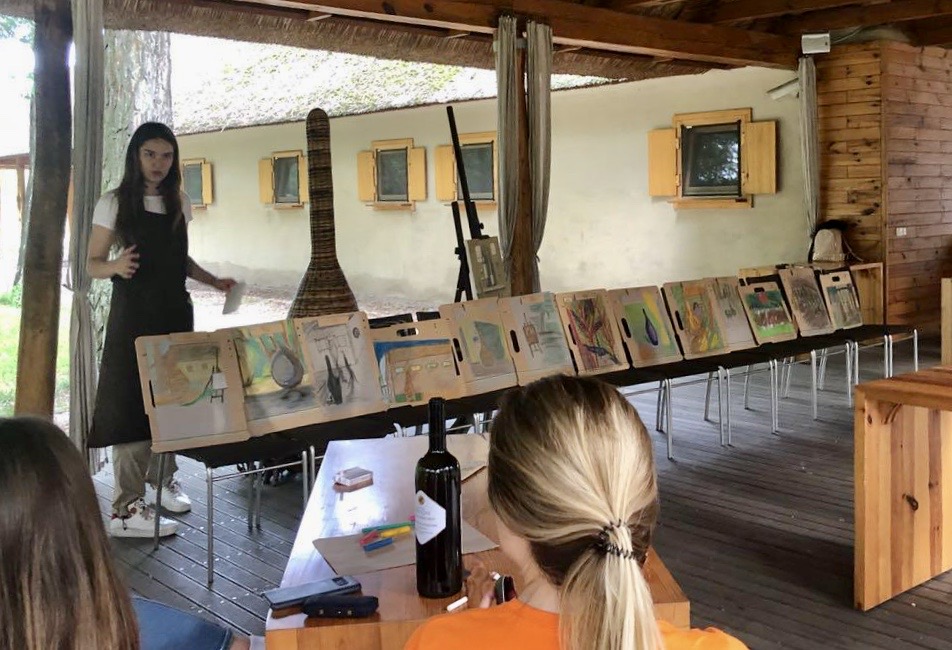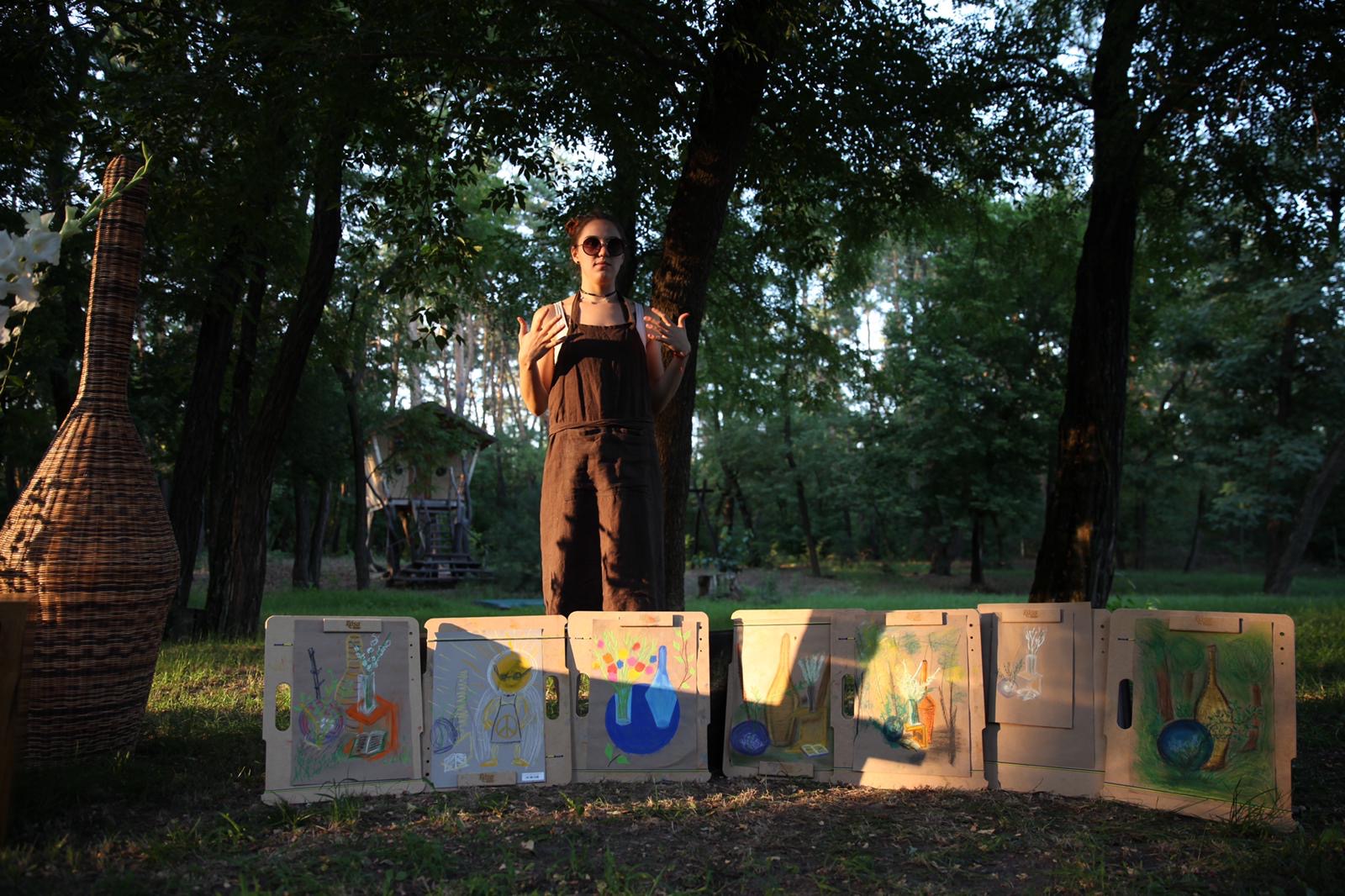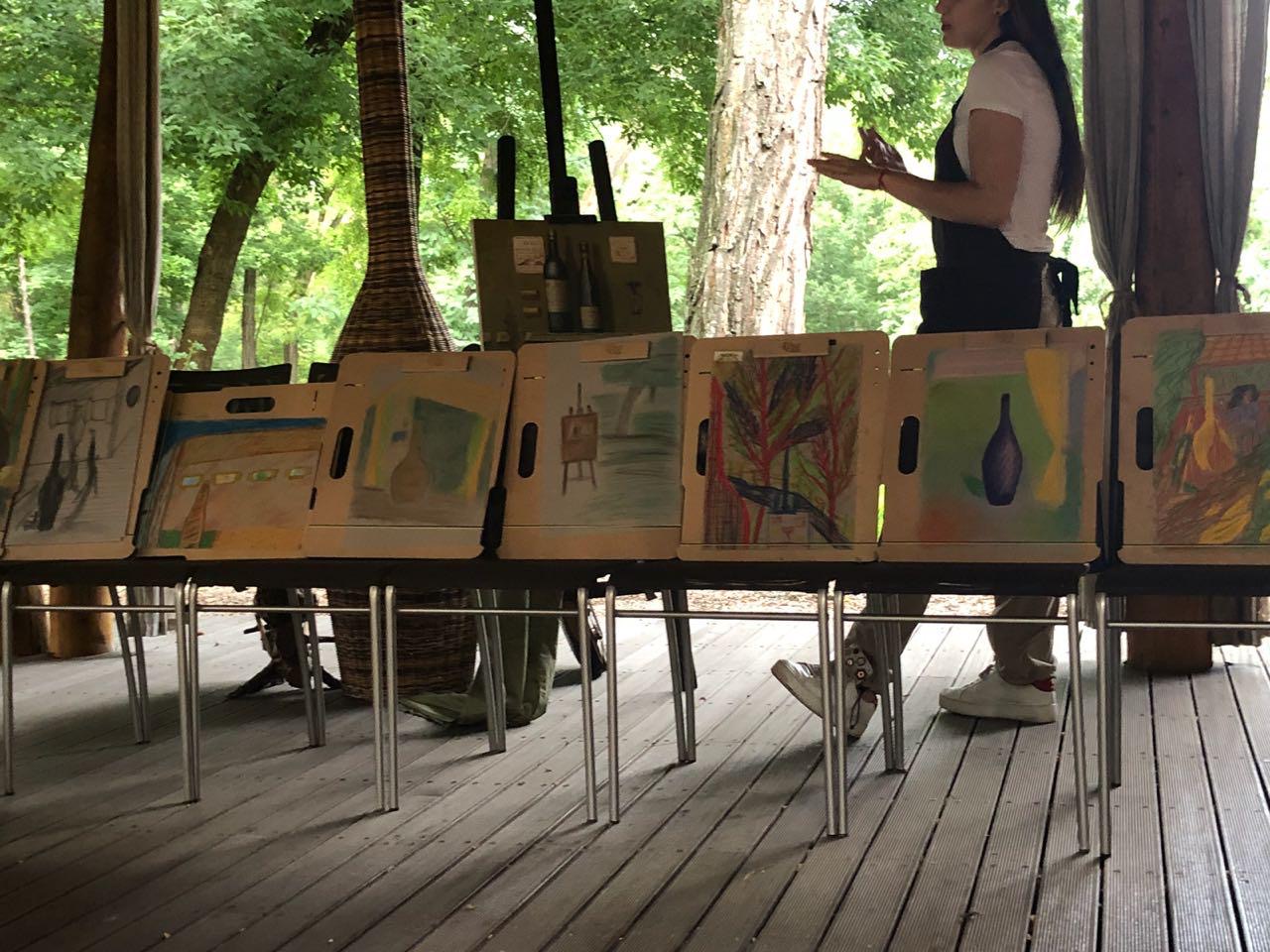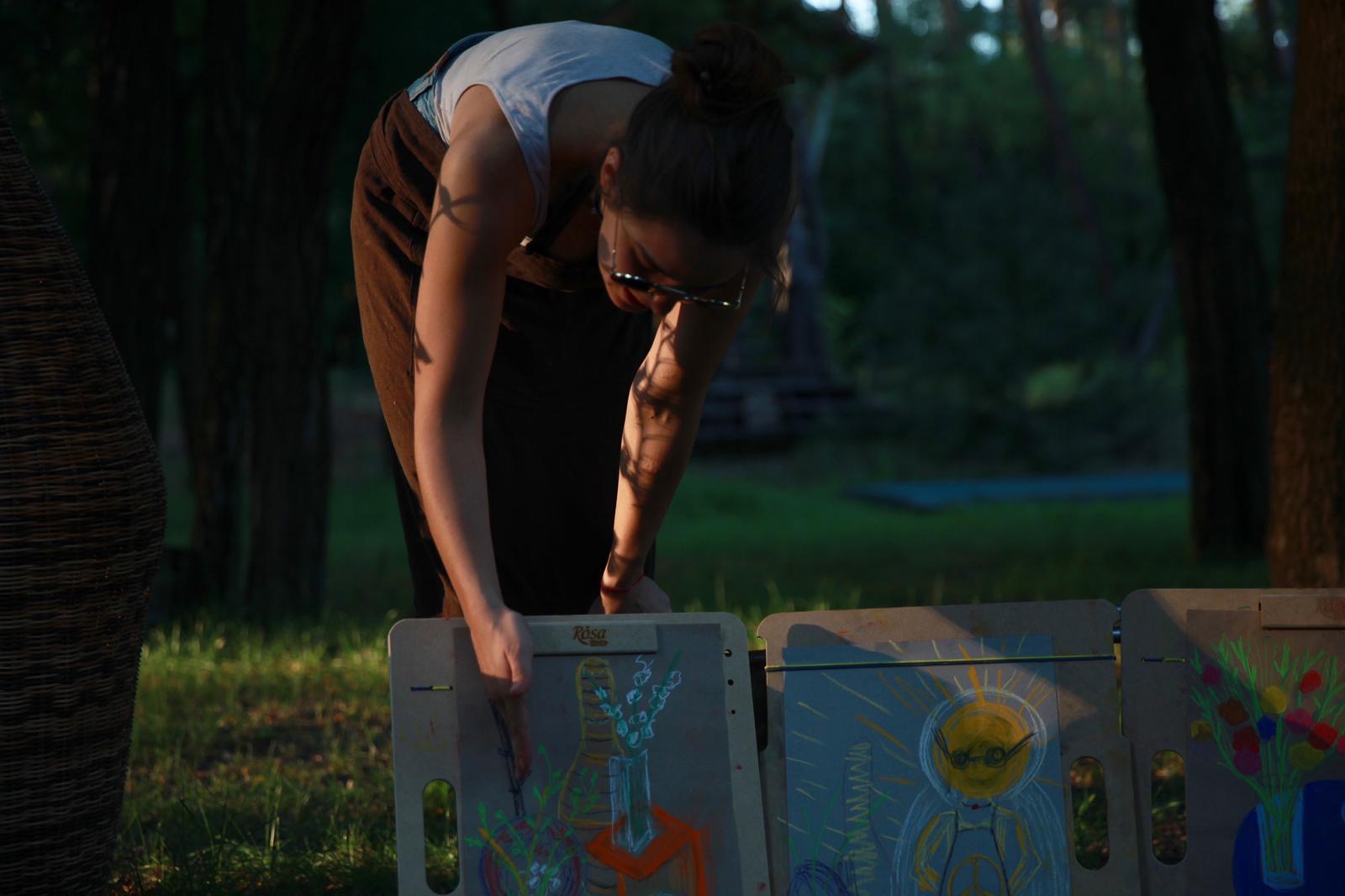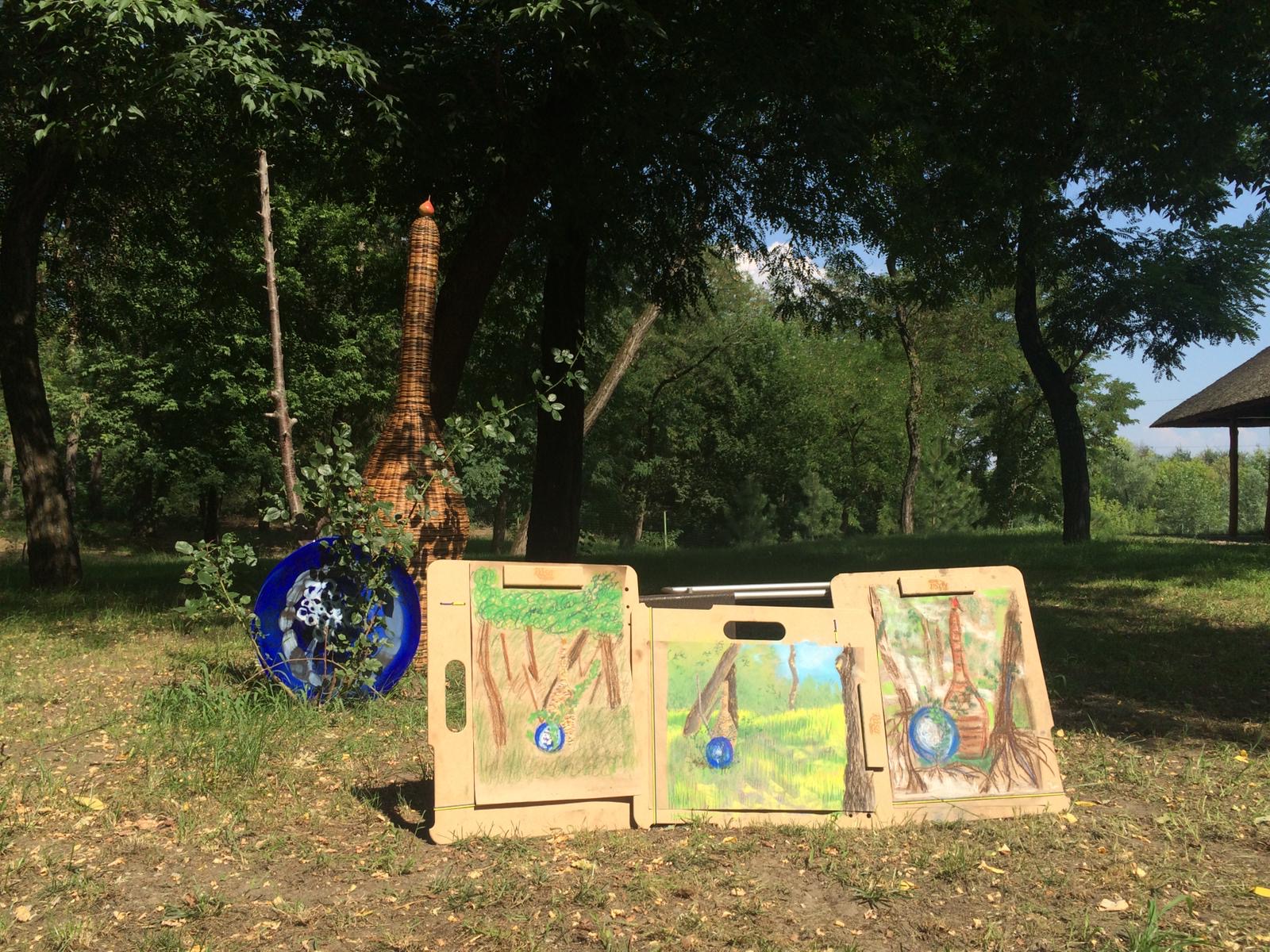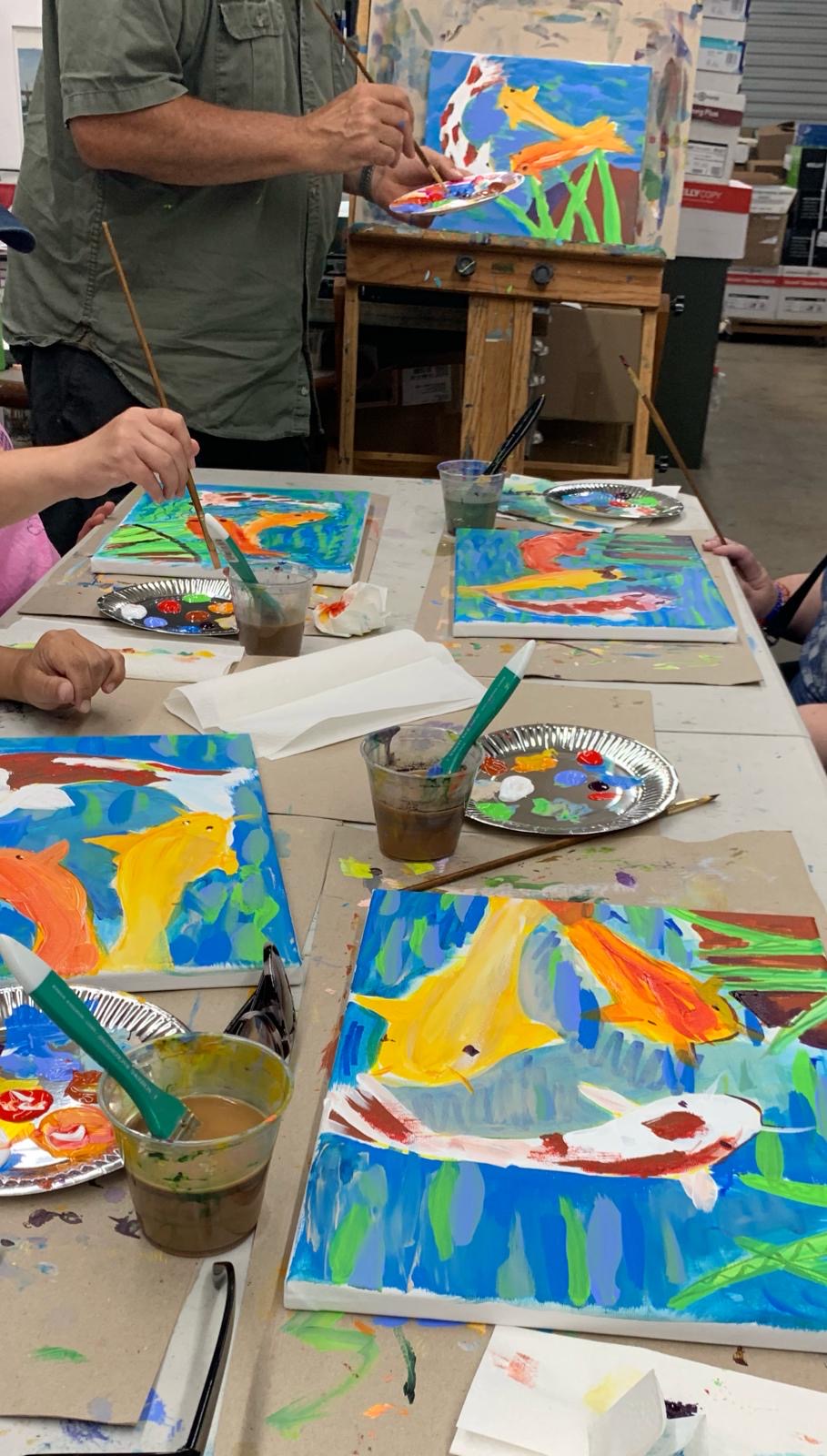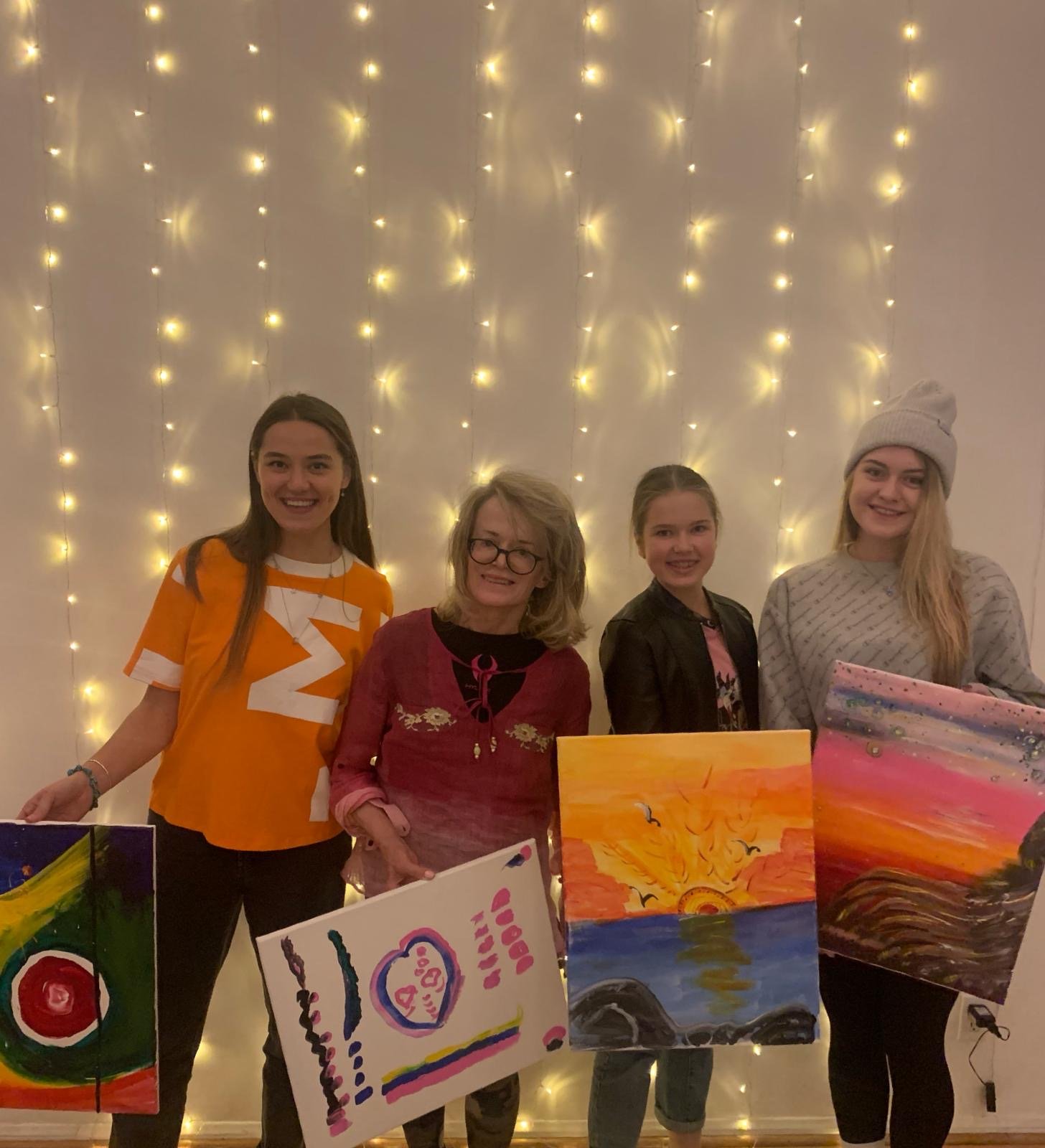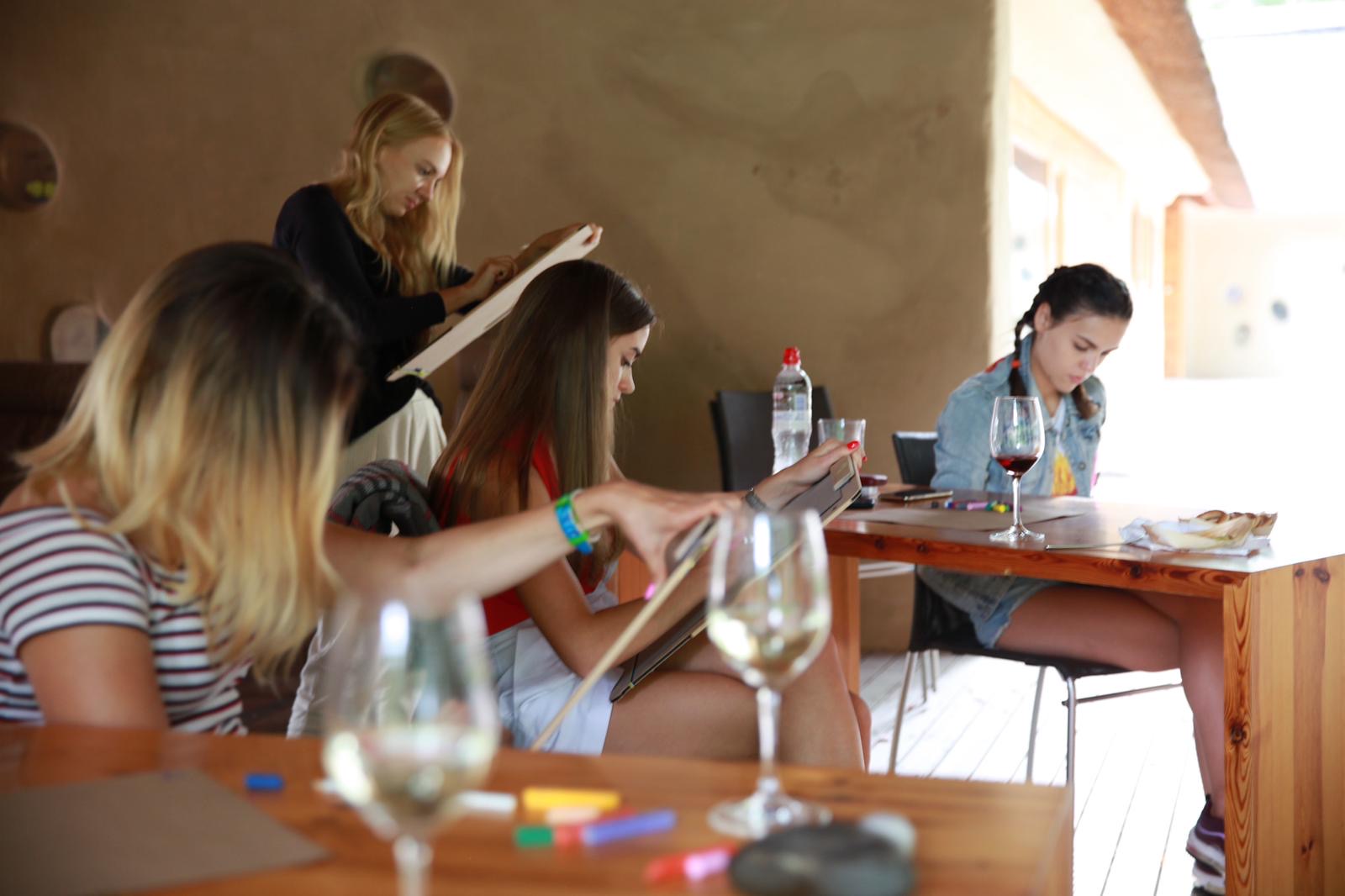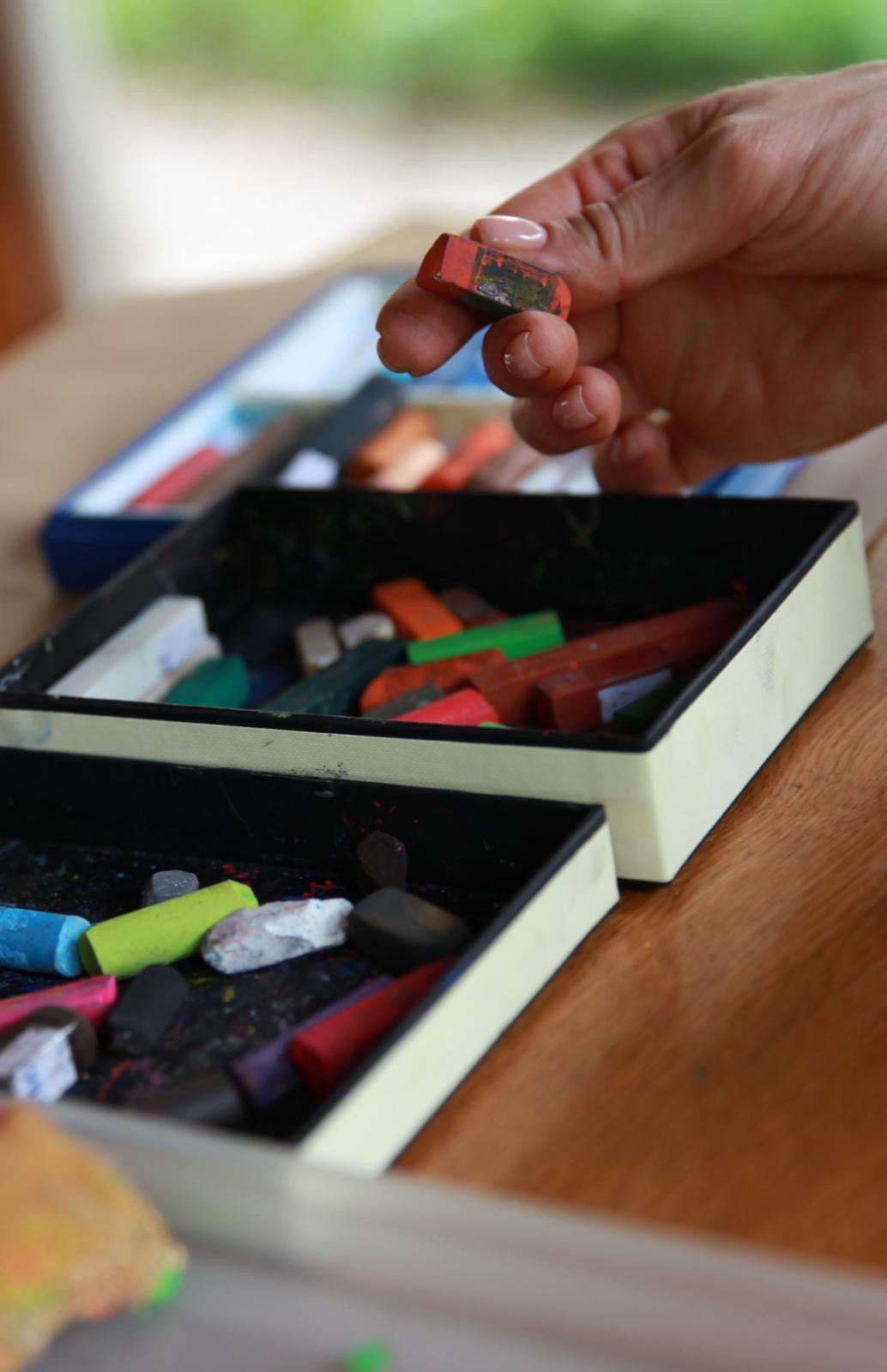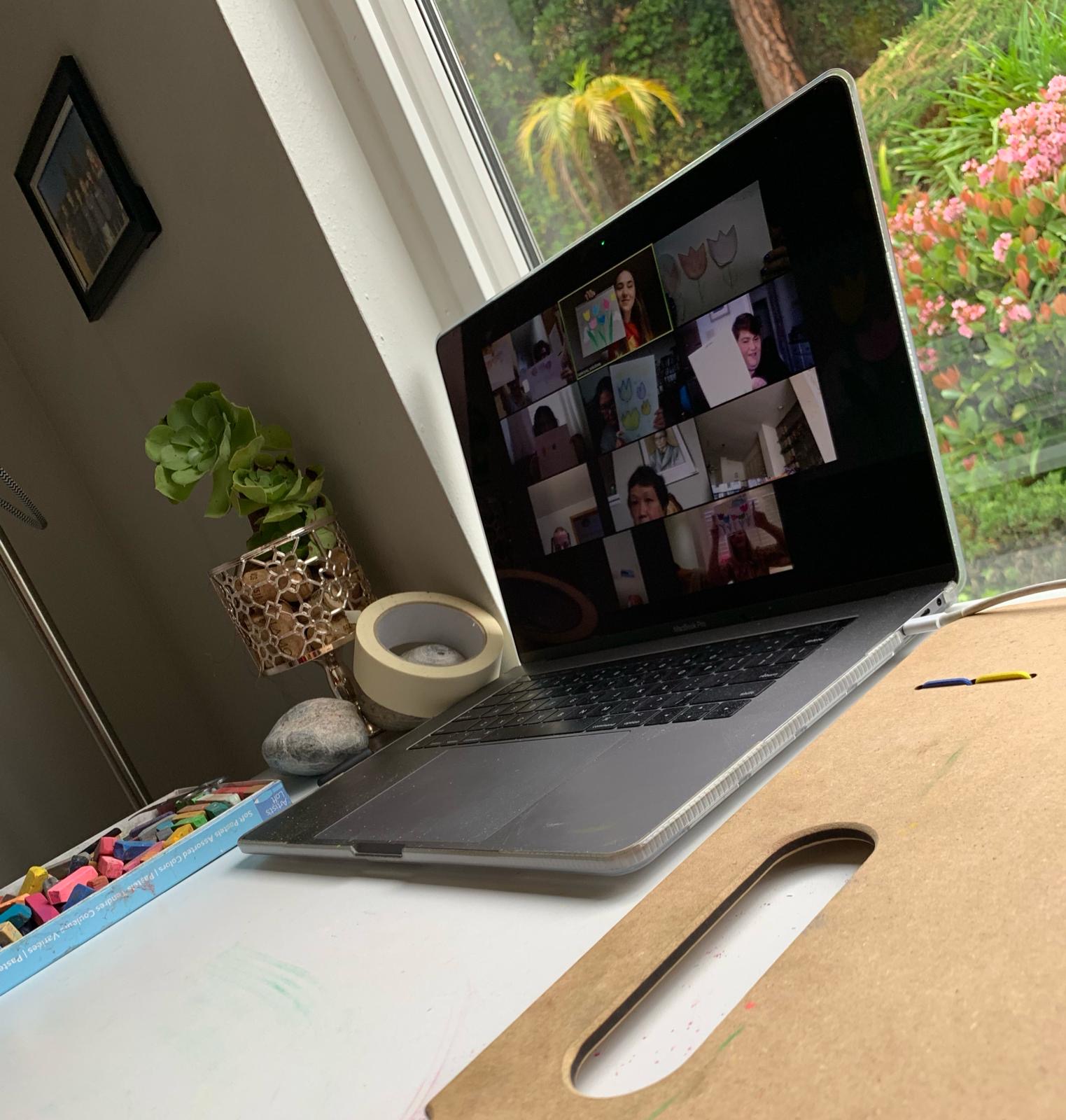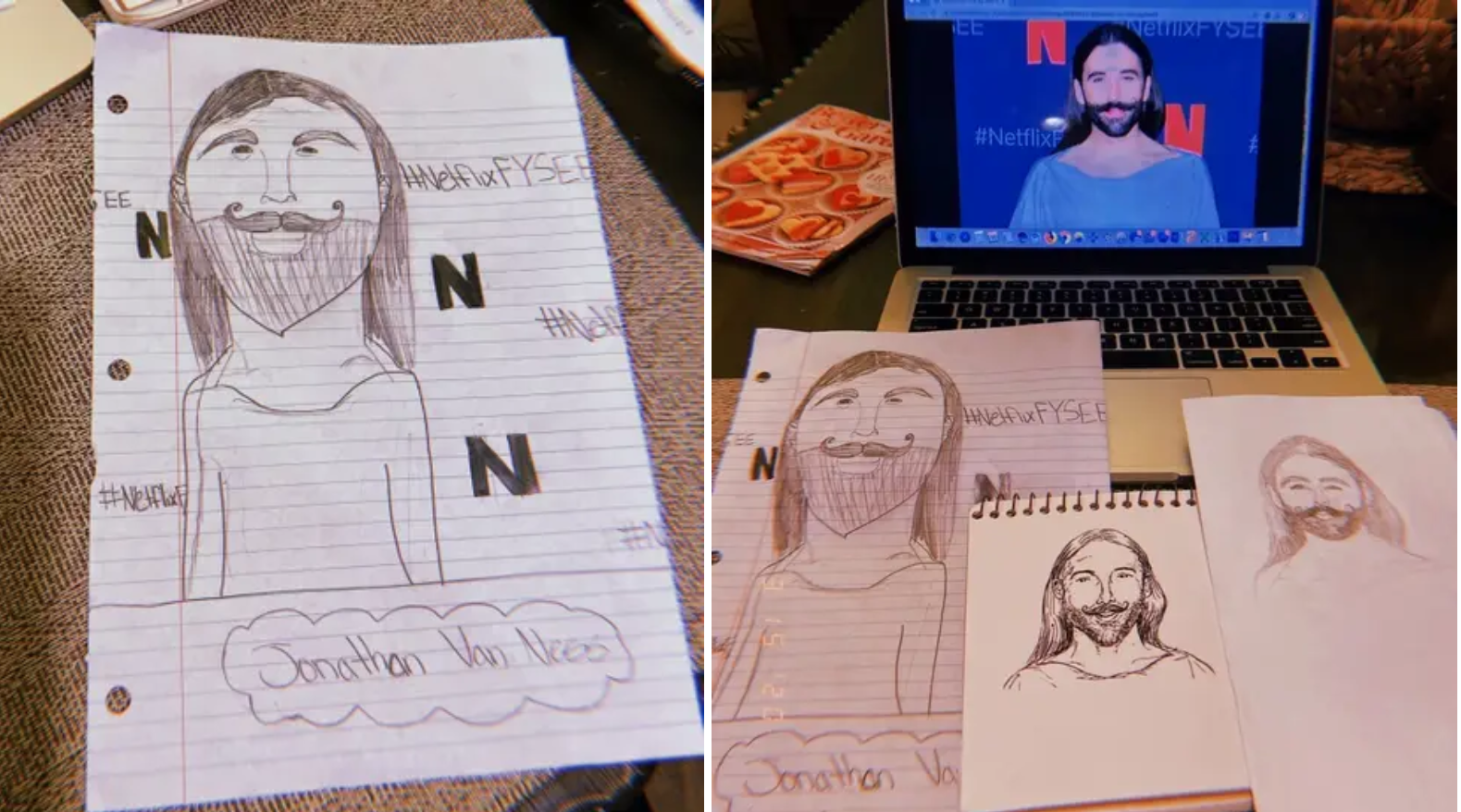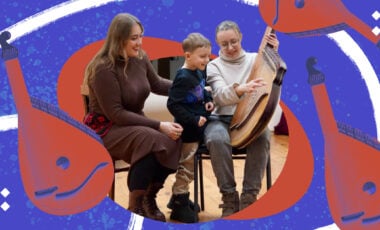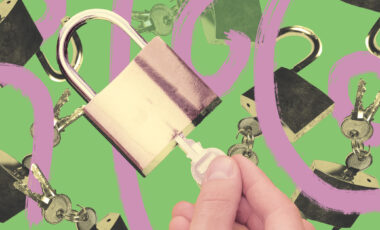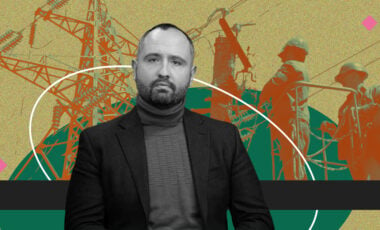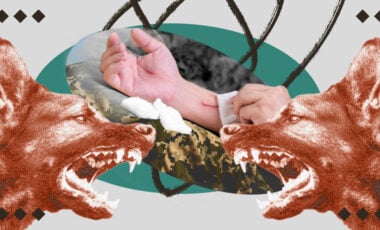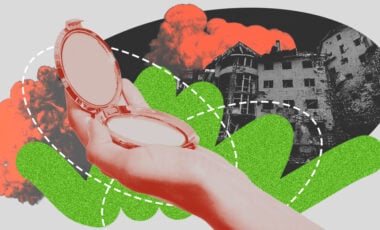Draw your thoughts: Ukrainian in California talks about how art therapy is used as treatment in the U.S.
And how to arrange home art therapy in quarantine
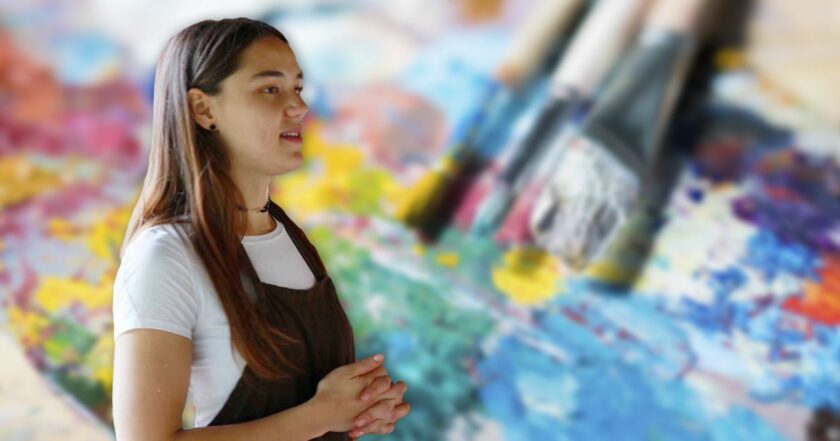
Kateryna Sokolova
Kateryna Sokolova from Dnipro is a practicing art therapist in Los Angeles. Having received an education in art and psychology, she has an occupation that embodies both areas. Kateryna has been professionally using art therapy to provide psychological support, rehabilitation of post-traumatic syndromes, and correction of development challenges in the USA for two years.
The charity organization Kateryna works for is acting according to the state program. It is the American state that finances art therapy for people with disabilities and everyone in need of social adaptation.
Alzheimer's disease, autism, attention deficit hyperactivity disorder, panic attacks, paralysis. It turns out that art therapy is especially important in each of these cases. Besides, it's also just an effective method of identifying and getting rid of psychological issues that every person has.
One would think simplicity is power. Take and draw anything. But then the fun begins.
Rubryka got to know from Kateryna Sokolova how the drawing/painting method can pull out of the pit of depression, quarrels, and tension, why they use it even within state programs in the United States, and how the quarantine reality has transformed the work of art therapists. The direct speech further.
What is art therapy?
This is a method by which a person can express themselves non-verbally. When we paint, we express ourselves in images. This is how we think. Our speech is an auxiliary tool for expressing thoughts in a structured way. When a person has some kind of emotional crisis or misunderstanding with the society where they live, it's much easier for them to express and understand themselves through images than through words. In this way, art therapy helps to uncover deep emotional issues and anchors that weigh us down.
It's especially helpful for children because they don't have a vocabulary to explain everything they go through and what they feel. And they feel a lot because they learn how to live.
What does an art therapy session look like?
There are many ways and means of art therapy. I'll tell you how I do art therapy (during the quarantine, they moved the group practice to online, more details further – Ed.). We take the figure. Let's say a candle, bowl, bottle, cloth, lamp, door, badge. It could be anything.
A group of 10 to 15 people sits around the figure. If there are less than 10, we'll have little variability of results, if more, it becomes not very individual. And everyone paints.
I have 3 rules. The first is to use at least 3 colors because color expression is one of the most important tools in art therapy. The second is to use as much canvas as possible. It means not to paint somewhere in the corner, from the side, but not to be afraid to stain the canvas. The third is not to look at other people's work. Because then diffusion occurs and you want to or not, but borrow the surrounding ideas.
The painting process takes about an hour. For some, it takes 15 minutes, while others can sit for the entire assigned time. During that, I talk about art history or color theory.
And the most powerful moment is when everyone shows their paintings. Everyone drew completely different things and at different times. One depicted the figure with everything in the background, the other drew a small object, the third added his colors, and someone removed everything difficult for them. Various color choices. Someone draws, filling the inside, and someone outlines the object.
For the first minute, everyone is impressed. Then I walk through, one by one, and give each of them a portrait of an emotional-psychological state, which describes a person at a moment in time, according to the composition, choice of color, strokes, and other characteristics.
What does painting provide?
The way the person paints is the key to understanding how they solve problems. No matter what we do, the brain works the same. Most people don't paint every day, and our minds perceive painting as a problem to solve. The less experience you have, the cleaner your self-expression is. Experience can add a little aesthetics, but it will take away the "selfness" from you.
By deciphering how the patient paints, the art therapist understands a person's way of solving problems, from what to eat for breakfast to interpersonal issues.
How can we know this from the image?
The color makes it evident which emotions prevail. The composition can say a lot about a person's self-esteem and self-awareness. They express it through stability or instability, how one looks at an object, from below or from above, which form they can draw the picture in, on which side they portray it. For example, the latter gives an understanding of temporary perception if a person is more focused on the past, or else dreams of the future strongly and doesn't identify themselves with reality in the present. Strokes look either infrequent or long. The painting process itself is also important because the specialist observes it. A person will paint, wipe, correct, or immediately take the color and apply impromptu. There are many components I analyze and identify in self-expression.
Who needs art therapy?
To look at yourself from the outside (the method of active introspection) is the most important component of this experience. In Ukrainian society, unlike in the West, the culture of working with a psychologist is still poorly developed. It has a stereotype of "abnormality." But a psychiatrist deals with deviations from the norm, and a psychologist is a personal consultation, an opportunity to look at yourself from the outside which will help assess your resources objectively and set the movement vector correctly.
If all goes well, it will help the person optimize their potential and maximize opportunities. But, unfortunately, most often people come to a psychologist at an emotional dead end. Working on yourself with a professional helps to find a way out.
Art therapy helps children to work out concentration, perseverance.
For adults and older people, it helps on a physiological level, since it involves hand manipulation and thinking in images, which activates rarely used parts of the brain.
Now 80% of strokes occur in the left hemisphere. Therefore, after a stroke, people often lose their dominant side, the right hand, the right half of the face sags. They lose motion activity. Strokes happen more and more at an early age. Earlier it was a problem for people over 60, today more and more strokes occur before the age of 30. The reason is we wear ourselves down with stress. We stop allowing ourselves to think in images, even though it's our nature. The entire right hemisphere is figurative, how we orient ourselves in space, how we perceive the mood of other people.
While the left hemisphere is logic, numbers, words. We load it so much with the pressure that society and economy place on us from the outside that people lose balance, and later health because of it. Therefore, painting, like dancing, singing, is activating the right hemisphere. Thus, we physiologically balance our body and our entire personality.
How is art therapy applied to special needs individuals?
First, people who want to know themselves better can try art therapy. We may often be afraid to admit to ourselves the very disturbing topics. You need to do it through painting and with a third person, a mediator-therapist, to find out and settle the problem.
But it's also used for a very wide range of psycho-correction and analysis.
The first is children with an autism spectrum disorder. It is difficult for them to communicate with the world. The painting process will help the children express themselves. And then the specialist can help them find words that will describe their state.
The second is ADHD (attention deficit hyperactivity disorder). This disorder expresses itself in the difficulty of concentrating, hyperactivity, poorly controlled impulsivity. It is increasingly common in school children. Parents punish, scold children, but not everything helps. The children do what they dislike; they suffer from fear of punishment.
There are more and more such characteristics. We are turning into a "generation of a minute." Our memory span, a concentration loop that our brain travels, shrinks. It becomes physically impossible for children to sit in a lesson for 45 minutes, when they're used to playing, quickly finding answers, watching YouTube. A minute passes and they change new content. Unfortunately, the education system doesn't adapt as quickly as our children and technology develop and evolve. Art therapy helps children with ADHD lengthen their concentration loop. At first, they'll sit for only two minutes. Or they'll tear the paper sheets and paint something new each time. But with practice, with a long course, they'll concentrate and won't experience panic attacks. In 10-15 minute steps, they'll increase perseverance, which will become the norm for the child.
Often with family conflicts or various traumas, emotional or physical abuse, art therapy helps to overcome the barrier of fears and learn to express yourself again. Or if you don't bring up some topics in the family, because you're afraid to spoil relationships or aggravate disagreements, painting can peacefully bring this to the surface.
Art therapy can help adults who have repeated panic attacks. The process of self-expression will be important for them. It's soothing for managing their breathing and heartbeat.
We also use it for adults with schizophrenia. These people are often afraid to talk about what's happening in their head; they lose the sense of reality: what is real and what is hallucination. Through painting, we can diagnose more clearly and control their condition. They cannot hide anything through the painting if it is a course.
To develop brain and motor skills, we use art therapy for people with paralysis, dementia, and Alzheimer's disease. When we build new neural connections in the brain, we increase its ability to regenerate itself and adapt to new conditions. The older we get, the more we need to take on our heads with extra activities.
How long does it take to do art therapy?
Drawing shapes is just the first step. You can draw portraits, illustrations of your dreams, your condition, fantasy. There are a lot of options.
The duration is individual. This should be a course, not a constant practice. Because working with a psychologist can be addictive, then you don't feel whole without it.
Why is art therapy usually done in a group?
It's easier to do it in a group. If a person opens up only to their therapist, it'll be easier for them in life to open up to one person. They won't feel comfortable in a group of people, in a class, at work.
Time helps. The first time, a person may feel tense. As soon as they put something on paper, and that's it. Self-expression is already underway, and you can start talking to a person even with starting strokes.
The further you go in therapy, the more comfortable it becomes. The group gets to know each other, develops trust, it becomes clearer that not everything is so scary. And people can open up and share their feelings, opinions, progress, and whatever in the classroom.
How do they use art therapy in the USA?
In the U.S. they do art therapy with war veterans, with people having been subjected to domestic violence, with people from detention facilities. They can direct people with all kinds of problems and needs to this practice.
I work for a charity overseen by the State Department of Mental Health. We help adults with mental challenges.
The help system is decentralized, each region has its center that deals with its problems. I work in a program called Canyon Verde in the Harbor Regional Center in southern California. We have 45 regular customers diagnosed and registered through this regional center before they were 18 years old. It is both innate problematic and gained conditions because of accidents, strokes, violence, and other cases.
The most obvious result in people who have gone through a traumatic experience is that panic attacks disappear. In people with genetic delays such as Down syndrome or cerebral palsy, the result is that negative dynamics slow down. This is what, as a professional, I can be proud of.
One participant in our program was recovering for a long time. She was a victim of two early strokes. Because of them she lost her ability to speak and was paralyzed. Thanks to art therapy, she opened her mini-business. Having discovered enough talent and courage to express herself, she began to paint and sell pictures.
How has quarantine changed the art therapist's job?
The quarantine was introduced on March 16 in California. Our charity continued to go to work until a complete lockdown. Now we have moved classes with our clients online.
Of course, it is tough. It is difficult to follow people with special needs online, we cannot compare it to being present in person. Nevertheless, we send out tasks; they print them out at home. And we arrange a group session through Zoom. It doesn't have a nice visual form. They draw with whatever they have. We can use even a simple pencil and toilet paper. It is difficult to coordinate, but it helps one hundred percent.
How to do art therapy yourself in quarantine?
You can do art therapy yourself. But any self-treatment is a very subjective type of assessment because you either over-praise yourself or are afraid to compliment or overthink. Here you can benefit from the very process of art therapy.
This method can help protect the world in home confinement. We found ourselves locked at home with our loved ones. For example, mom, dad, children, spouse. There are often many quarrels, fatigue, stress. Everyone is in a stressful situation. We have to face one another in natural settings. It's difficult. So, I would suggest that the family gather in the evening and draw. Someone may react to it with a smile or ridicule. But if you sit down and start drawing, you see that it will turn the energy in a positive direction. Instead of attacking each other, you will splash this energy on the paper. You can recall or create something nice. Fantasy will not only help calm down but also direct the brain so it can come up with creative solutions to problems or adapt to a crisis.
A colossal problem is activities with children. What should we do? If you offer to draw, it will calm you down, direct the energy, bring the mother and child closer together.
If you're stuck at home, and you live alone, I also advise you to sit down and draw. It'll have a slightly different effect. More soothing. It won't be for the sake of unity. It's difficult to force yourself, but I still advise everyone.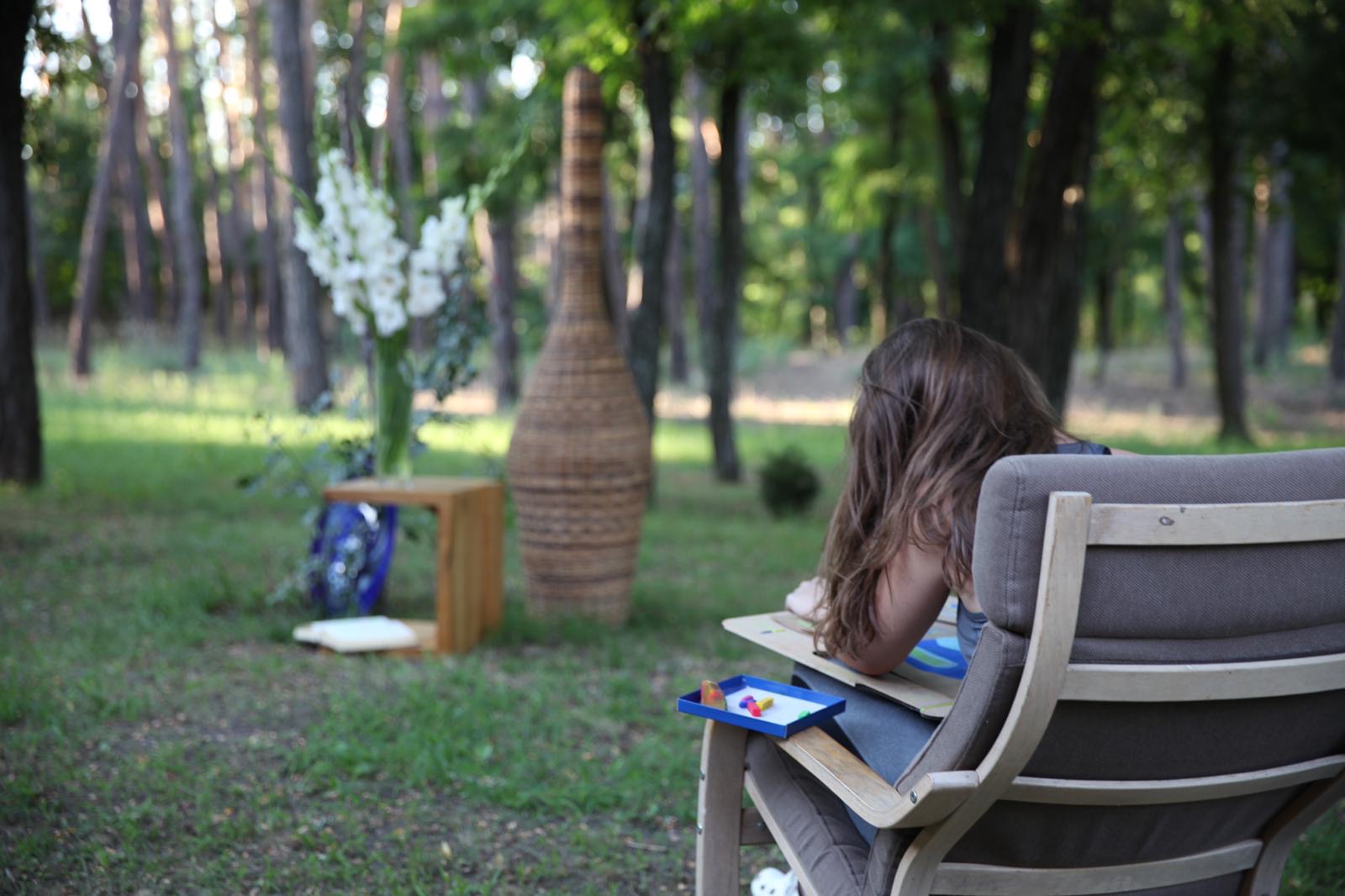
What to draw about? Remember something nice. It can be anything. You can do portraits of each other, put a fruit basket, and try to draw it. But it mustn't be a competition. When there is no professional to lead the session, the competition begins. I advise drawing something that you can't compare.
It could be a fond memory or an idea. Draw your dream vacation or designer mask, something kind that will evoke positive emotions, but won't be a stumbling block later.
Don't diagnose anyone, because again, when there is no professional, you need not get personal, this can only aggravate the tension inside the house. Discuss what you drew, laugh. Discussion is mandatory. To tell everyone what you were thinking, what you were trying to portray. Someone can add something. But it shouldn't be therapy with personal attacks.
If there's an opportunity to contact a professional psychologist, I highly recommend it. Now, besides all infectious cases, hospital admissions with heart attacks have become very frequent. It's coming from raising cortisol, the stress hormone. People panic, watch TV, sit at home, have nowhere to splash energy out. It stays inside them and leads to negative consequences: illness, seizures, panic attacks, depression. If you feel stressed, try to talk to someone about it, and preferably someone from outside your home. I understand that the situation at home can be tense. As much as you love each other, we forgot how it is to spend time together 24/7. We can't do it. If you cannot find a professional, it may be your friend on the phone or an old forgotten acquaintance. But I insist that you find a professional so you don't experience conditions hard to leave behind.
Kateryna Sokolova's Contact Info:



